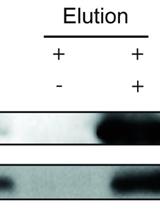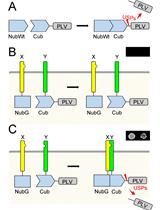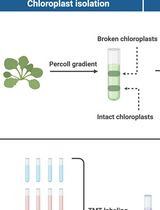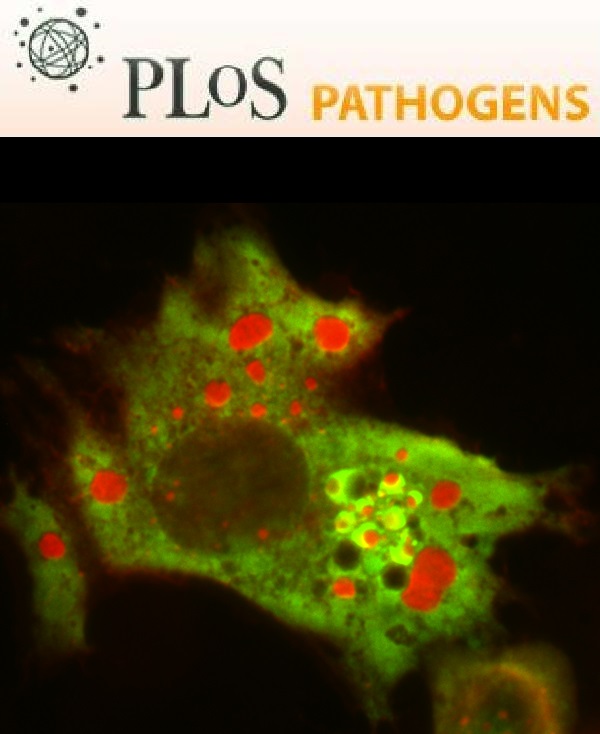- Submit a Protocol
- Receive Our Alerts
- Log in
- /
- Sign up
- My Bio Page
- Edit My Profile
- Change Password
- Log Out
- EN
- EN - English
- CN - 中文
- Protocols
- Articles and Issues
- For Authors
- About
- Become a Reviewer
- EN - English
- CN - 中文
- Home
- Protocols
- Articles and Issues
- For Authors
- About
- Become a Reviewer
UV Cross-linking Assay and Competition Assay
Published: Vol 2, Iss 24, Dec 20, 2012 DOI: 10.21769/BioProtoc.310 Views: 21846

Protocol Collections
Comprehensive collections of detailed, peer-reviewed protocols focusing on specific topics
Related protocols

Protein Immunoprecipitation Using Nicotiana benthamiana Transient Expression System
Fang Xu [...] Xin Li
Jul 5, 2015 23024 Views

Mating Based Split-ubiquitin Assay for Detection of Protein Interactions
Wijitra Horaruang and Ben Zhang
May 5, 2017 17053 Views

Assessing Metabolite Interactions With Chloroplastic Proteins via the PISA Assay
Anna Karlsson [...] Elton P. Hudson
May 5, 2025 1806 Views
Abstract
UV cross-linking assay is a standard method used to detect protein-RNA interaction. This method takes advantage of UV irradiation to trigger the formation of the covalently bonded RNP (ribonucleoprotein) complex that is more stable and makes it possible to be isolated in the denaturing conditions. Briefly, 32P-labeled RNA probe and proteins are incubated to form RNP complexes spontaneously; the mixture is then exposed to UV irradiation, followed by treatment with ribonuclease to remove RNA fragments not covalently bound to protein. The oligoribonucleotide-protein complexes are analyzed by SDS-PAGE, and the signals visualized by phosphorimaging. Competitive UV cross-linking assay is a method to determine the protein binding sites and specificity on the RNA substrate. In this assay, the excessive amounts of unlabeled competitor RNA are pre-incubated with the proteins prior to the addition of 32P-labeled RNA probe. If the competitor RNA comprises the protein binding region, the bindings between proteins and RNA probes will be competed and the radioactive binding signals will be reduced.
Keywords: UV cross-linking assayMaterials and Reagents
- Purified recombinant protein or cell extract
- RNase inhibitor (Promega Corporation, catalog number: N251B )
- BSA (Sigma-Aldrich, catalog number: A7906 )
- Yeast total RNA (Life Technologies, Ambion®, catalog number: AM9260G )
- Tween 20 (AM7118)
- RNase A (Sigma-Aldrich, catalog number: R4875 )
- RNase T1 (Epicentre Biotechnologies, catalog number: NT09100K )
- Materials for SDS-PAGE
- Transcription optimized 5x buffer (Promega Corporation, catalog number: P118B )
- Recombinant RNasin® Ribonuclease Inhibitor (20 unit) (Promega Corporation, catalog number: N251B )
- RNase-Free DNase (1 unit) (Promega Corporation, catalog number: M610A )
- [α-32P] UTP (50 μCi at 10mCi/ml) (IZOTOP)
- Illustra MicroSpin G-50 Column (GE Healthcare Life Sciences, catalog number: GE-27-5330-02 )
- T7 RNA Polymerase (20 unit) (Promega Corporation, catalog number: P207B )
- DTT (Promega Corporation, catalog number: P117B )
- Bromphenol blue
- β-Mercaptoethanol
- 32P-labeled RNA probe (see Recipes)
- 4x binding buffer (see Recipes)
- 5x protein sample buffer (see Recipes)
- Competitor RNA transcripts (see Recipes)
Equipment
- 37 °C and 100 °C water baths
- 254-nm UV light source (Stratagene, UV stratalikerTM, model: 1800 )
- Equipments for SDS-PAGE
- Gel Dryer (Bio-Rad Laboratories, model: 583 )
- Imaging plate (Fujifilm Corporation)
- Fujifilm BAS-1500 Image Analyzer (Fujifilm Corporation, Multi Gauge)
Procedure
- UV cross-linking assay
- Prepare the following mixture on ice:
2.5 μl 4x binding buffer
0.5 μl RNase inhibitor (10 units/μl)
1.0 μl BSA (1 μg/μl)
1.0 μl Yeast total RNA (1 μg/μl)
0.5 μg purified protein
25 fmol 32P-labeled RNA probe
Adjust the final volume to 10 μl with Nuclease-free water and mix the reaction.
Note: The amount of protein used in the reaction depends on the RNA binding affinity. Therefore the amount of protein, either purified one or from cell extract, needs to be tested. - Incubate at room temperature (RT) for 10 min.
- Place the cap-opened tube containing the reaction mixture on ice, and illuminate under a UV lamp at 254 nm wavelength for 20 min.
Note: The distance between the sample and UV source is about 10 cm. - Add 1 μl of 10 mg/ml protease-free RNase A and 1 μl of 0.5 unit/μl RNaseT1 to the reaction mixture. Incubate at 37 °C for 30 min.
Note: A reaction (as shown in procedure 1a) excluding the protein addition needs to be done as the negative control to make sure the unbound RNA probe is complete digested. - Add 3 μl of 5x protein sample buffer to the reaction mixture. Incubate the sample in a boiling water bath for 5 min.
- Analyze the sample by electrophoresis with a standard SDS-PAGE gel.
- Dry the gel by the using of Bio-Rad model 583 Gel dryer and place an imaging plate over the dried gel. Expose overnight to visualize the radioactive signals of cross-linked proteins.
- Scan the radioactive images by the using of Fujifilm BAS-1500 Image Analyzer.
- Prepare the following mixture on ice:
- Competition assay
- The procedures are the same as UV cross-linking assay described above except that the unlabeled competitor RNA is pre-incubated with the protein at RT for 10 min prior to the addition of 32P-labeled RNA probe.
- Prepare the following mixture on ice:
2.5 μl 4x binding buffer
0.5 μl RNase inhibitor (10 units/μl)
1.0 μl BSA (1 μg/μl)
1.0 μl Yeast total RNA (1 μg/μl)
0.5 μg purified protein
50 fmole (2x), 250 fmole (10x), or 1,250 fmole (50x) competitor RNA.
Adjust the final volume to 10 μl with Nuclease-free water and mix the reaction. - Incubate at RT for 10 min.
- Add 1 μl 32P-labeled RNA probe (25 fmole) and Incubate at RT for 10 min.
- The following steps are the same as UV cross-linking assay described above (from procedure 1c-1 h).
- The procedures are the same as UV cross-linking assay described above except that the unlabeled competitor RNA is pre-incubated with the protein at RT for 10 min prior to the addition of 32P-labeled RNA probe.
Recipes
- 32P-labeled RNA probe preparation
In vitro transcription is performed with linearized DNA template and T7 RNA, polymerase in the presence of [α-32P] UTP.- Prepare the following mixture on ice:
5 μl Transcription optimized 5x buffer
2.5 μl 100 mM DTT
5 μl rNTP mix (10 mM each of ATP, CTP, and GTP, and 20 μM of UTP)
0.5 μl recombinant RNasin® Ribonuclease Inhibitor (20 unit)
1 μl T7 RNA polymerase (20 unit)
5 μl [α-32P] UTP (50 μCi at 10 mCi/ml)
Linearized DNA template (1 μg)
Adjust the final volume to 25 μl with Nuclease-free water and mix the reaction. - Incubate at 37 °C water bath for 1 h.
- Add 1 μl RQ1 RNase-free DNase (1 unit) and Incubate at 37 °C water bath for 15 min.
- Load the mixture into illustra MicroSpin G-50 Column and spin 2 min at 735 x g for elution of labeled transcripts and sequestering from free [α-32P] UTP.
- Prepare the following mixture on ice:
- 4x binding buffer
80 mM Tris-Cl (pH 8.0)
12 mM MgCl2
40 mM KCl
8 mM DTT
16 % (v/v) glycerol - 5x protein sample buffer
312.5 mM Tris-Cl (pH 6.8)
50% (v/v) glycerol
10% (w/v) SDS
0.1% (w/v) bromphenol blue
12.5% (v/v) β-Mercaptoethanol - Competitor RNA transcripts
In vitro transcription is performed with linearized DNA template and T7 RNA polymerase.- Prepare the following mixture on ice:
10 μl Transcription Optimized 5x buffer
5 μl 100 mM DTT
8 μl rNTP mix (4 mM each of ATP, CTP, GTP, and UTP)
0.5 μl Recombinant RNasin® Ribonuclease Inhibitor (20 unit)
1 μl T7 RNA Polymerase (20 unit)
Linearized DNA template (1 μg)
Adjust the final volume to 50 μl with Nuclease-free water and mix the reaction. - Incubate at 37 °C water bath for 2 h.
- Add 1 μl RQ1 RNase-Free DNase (1 unit) and Incubate at 37 °C water bath for 15 min.
- Purification of RNA transcripts with Phenol/Chloroform/Isoamyl Alcohol (25:24:1) and then ethanol precipitation of RNA.
- Prepare the following mixture on ice:
Acknowledgments
This protocol was adapted from our previous publication: Huang et al. (2012). This research was supported by the Ministry of Science and Technology, Taiwan (grants NSC-98-2628-B-005-020-MY3 and NSC-98-2811-B-005-030).
References
- Huang, Y. W., Hu, C. C., Liou, M. R., Chang, B. Y., Tsai, C. H., Meng, M., Lin, N. S. and Hsu, Y. H. (2012). Hsp90 interacts specifically with viral RNA and differentially regulates replication initiation of Bamboo mosaic virus and associated satellite RNA. PLoS Pathog 8(5): e1002726.
Article Information
Copyright
© 2012 The Authors; exclusive licensee Bio-protocol LLC.
How to cite
Readers should cite both the Bio-protocol article and the original research article where this protocol was used:
- Huang, Y. and Hsu, Y. (2012). UV Cross-linking Assay and Competition Assay. Bio-protocol 2(24): e310. DOI: 10.21769/BioProtoc.310.
- Huang, Y. W., Hu, C. C., Liou, M. R., Chang, B. Y., Tsai, C. H., Meng, M., Lin, N. S. and Hsu, Y. H. (2012). Hsp90 interacts specifically with viral RNA and differentially regulates replication initiation of Bamboo mosaic virus and associated satellite RNA. PLoS Pathog 8(5): e1002726.
Category
Biochemistry > RNA > RNA-protein interaction
Plant Science > Plant biochemistry > Protein > Interaction
Do you have any questions about this protocol?
Post your question to gather feedback from the community. We will also invite the authors of this article to respond.
Tips for asking effective questions
+ Description
Write a detailed description. Include all information that will help others answer your question including experimental processes, conditions, and relevant images.
Share
Bluesky
X
Copy link








